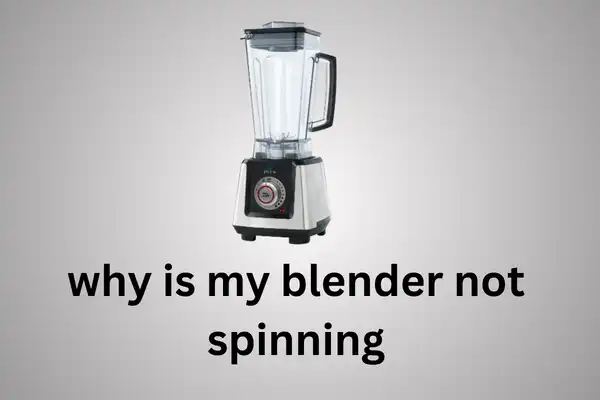A blender is an essential kitchen appliance for many, perfect for making smoothies, soups, and sauces. But what happens when you’re ready to blend, and your appliance refuses to cooperate?
When your blender’s blades refuse to spin, it can be a source of frustration. However, with a few troubleshooting tips, you might just find an easy fix. Here’s what you can do when your blender isn’t spinning.
1. Check the Power Source
First things first: ensure that your blender is properly powered. Check the outlet by plugging in another appliance to see if it works. If your blender is battery operated, ensure it’s charged.
Sometimes, the problem can be as simple as a blown fuse or tripped circuit breaker. These are easy fixes that can get your blender back in action.
2. Inspect the Blender Jar Placement
Blenders are designed with safety mechanisms that prevent the blades from spinning unless the jar is correctly placed. Check to make sure the jar is firmly seated and locked onto the base.
Also, ensure that the lid is securely fastened. Improper placement can lead to the blender not functioning correctly.
3. Examine the Coupling Mechanism
The coupling is the unit that connects the blender’s motor to the blade assembly. Over time, this can become worn or even break, particularly with frequent use or heavy loads.
Inspect this area for any signs of wear or damage. If you find any, it’s likely time to replace this part.
4. Look for Obstructions
It’s not uncommon for food particles to get stuck underneath the blades or between the blade and jar. Unplug the blender, disassemble the jar from the base, and take a look for any obstructions. A thorough cleaning can often resolve this issue and get your blades moving again.
5. Evaluate the Motor
If the motor hums but the blades don’t turn, this could indicate a motor issue. It could be that the motor’s windings have burned out or that the drive belt has snapped.
Unfortunately, these issues are more serious and may require professional repair or even a motor replacement.
6. Check the Blade Assembly
The blade assembly itself can become tight and difficult to turn, often due to a buildup of food residue. Disassemble the blades from the jar and clean them thoroughly.
If they’re still not moving freely after cleaning, the bearings might be worn out, and the assembly may need to be replaced.
7. Test the Settings and Switches
The problem might also lie with the blender‘s settings or switches. Test the different speeds and functions to ensure that they’re all responding correctly.
Sometimes, the issue could be with a faulty switch, which can usually be replaced relatively easily.
8. Overload Protection Feature
Modern blenders often come with an overload protection feature that shuts down the machine to prevent motor damage.
If you’ve been using your blender for an extended period, or blending heavy loads, it might have overheated. Let it cool down for a while and try again.
9. Consult the Manual
When in doubt, the user manual is your best friend. It’s tailored to your specific model and often includes troubleshooting steps for common issues. The manual can provide model-specific guidance that might not be covered in general troubleshooting tips.
10. Contact Customer Support
If you’ve tried all the above and your blender still won’t spin, it’s time to reach out to customer support. The issue might be more complex than you can handle on your own, or there could be a recall on your model that you’re not aware of.
Customer support can offer assistance, and if your blender is still under warranty, you might be eligible for a repair or replacement.
Conclusion
While it can be irritating when your blender stops spinning, often the solution is simpler than you think. By systematically working through these troubleshooting tips, you can identify and solve many common issues without the need for professional help.
Always remember to prioritize safety, and never attempt to repair an appliance while it’s plugged in. If all else fails, professional repair or contacting customer support can be your final recourse.
With a bit of patience and some DIY spirit, you’ll likely have your blender whirring away again in no time, ready to tackle your next culinary venture.
By providing these detailed steps, readers will have a comprehensive guide to identifying and solving the issue with their blender. The article offers practical advice that empowers the reader to fix the problem independently, if possible, while also recognizing when it’s time to call in the professionals.
Enjoy video


